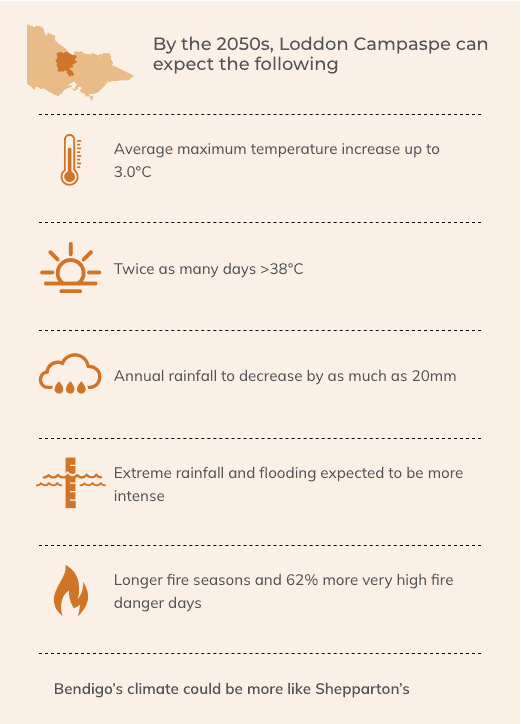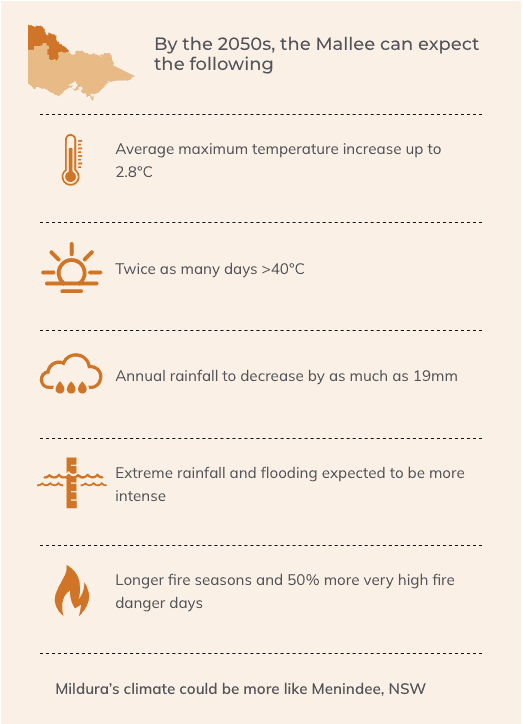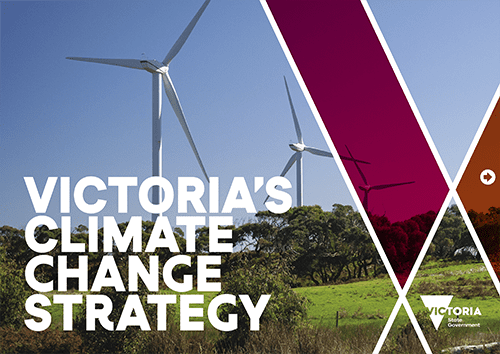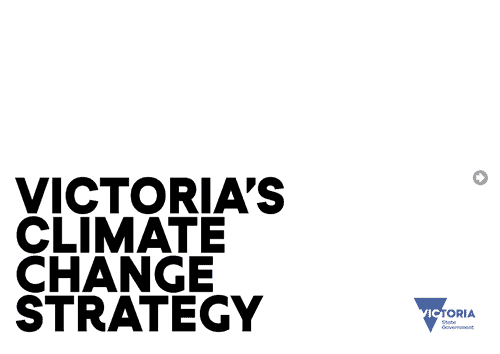Victoria’s climate is changing, and its impacts are already being experienced across our State. It is vital that everyone, from individuals to governments, prepare by taking action to reduce the potential impacts of climate change.
The Victorian Government has been leading transformational adaptation reform through the States’ Climate Change Act 2017 (the Act) and Victoria’s Climate Change Strategy. The Act requires the preparation of Adaptation Action Plans for the seven systems every five years until 2050 to ensure Victoria is resilient as the climate continues to change. These ‘systems’ are Primary Production, Built Environment, Education and Training, Health and Human Services, Transport, Natural Environment, and the Water Cycle.
A big challenge remains with what does this transformation look like for all the unique communities across Victoria. No one community shares the same physical, historical, cultural, social and environmental characteristics, which can support or hinder a community from adapting effectively.
To address these barriers, the Victoria Government has funded the development of six regional climate change adaptation plans. The five-year plans take a place-based approach that aims to strengthen capacity in local communities and empower them to work together in response to local challenges that cannot be address at a State-wide level. The plans seek to provide a lens to look at systemic and cross-sectoral issues, foster collaboration and drive locally led solutions by utilising unique strengths of different communities. Funding has been provided to support the initial implementation of the plan.
Local Climate Update
Warmer and drier
The Loddon Mallee region has already become warmer and drier – a climate trend likely to continue.
Local communities, residents and businesses are changing the way they do things in response. Getting climate-ready involves understanding how climate change is likely to affect you and your community and working out ways to adapt. Everyone can contribute to the Loddon Mallee region’s climate-ready future.
Over the past 100 years, global surface air temperatures have risen by almost 1°C. Both the atmosphere and the oceans have warmed. Human activity is causing climate change, through our release of greenhouse gases from the burning of fossil fuels, land use change and agriculture. Atmospheric concentrations of carbon dioxide are now more than 40% higher than they were before industrialisation.
In the Loddon Mallee region, the rate of warming has increased since the 1960s. On average, rainfall has declined since the 1960s, especially in autumn. The harsh Millennium Drought (1996 to 2009) ended with two of the wettest years on record in 2010–2011.
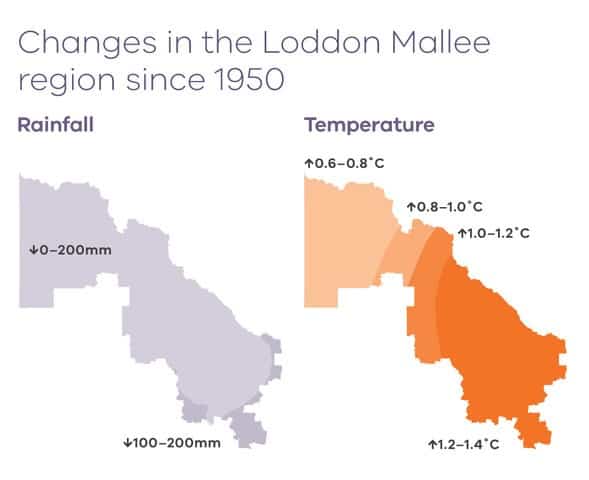
Recent climate
To north of the region, the Mallee, has hot summers with average maximum temperatures of 30°C. Winters are mild with an average daily temperature around 10°C.
The southern part of the region, the Loddon Campaspe, experiences cool and relatively wet winters and warm, dry summers. Average maximum temperatures are less than 25°C in the elevated southern regions. Frosts are common throughout the Loddon Mallee region.
The north is dry, with just 330mm of rainfall each year. Evaporation is high. Rainfall is considerably higher in the south, with the Macedon Ranges experiencing between 750mm and 800mm annually.
Climate variability and change
Our climate varies – it always has and always will.
This climate variability means that some periods are cooler and wetter than average (as was the case in the 1970s), while others are hotter and drier (such as during the Millennium Drought). However, due to climate change, the long-term average is changing. Future climate will be different from that in the past.
Looking ahead
The climate experienced over the long term is no longer a good indicator of the climate we can expect in the future.
Instead, we rely on information from climate models, along with other information. Climate models help us to understand the changes that are already happening and provide guidance on the changes to come.
Climate models give robust projections of the future climate, providing a solid evidence base from which to assess the risks of climate change and inform decisions that will support Victoria’s resilience into the future.
Climate projections suggest that Victoria will continue to become warmer and drier in the future. However, natural year-to-year and decade-to decade variability mean that relatively cooler periods and very wet years will still occur.
Future Climate Risks
The Victorian Government has partnered with CSIRO to help communities prepare for climate change by producing local-scale climate projections data.
This information helps us explore what climate change means locally.
![]() We acknowledge and respect Victorian Traditional Owners as the original custodians of Victoria’s land and waters, their unique ability to care for Country and deep spiritual connection to it. We honour Elders past and present whose knowledge and wisdom has ensured the continuation of culture and traditional practices. We are committed to enabling self-determination for all Aboriginal people and aim to work closely with the Aboriginal community to drive action and improve outcomes especially in the context of a changing climate.
We acknowledge and respect Victorian Traditional Owners as the original custodians of Victoria’s land and waters, their unique ability to care for Country and deep spiritual connection to it. We honour Elders past and present whose knowledge and wisdom has ensured the continuation of culture and traditional practices. We are committed to enabling self-determination for all Aboriginal people and aim to work closely with the Aboriginal community to drive action and improve outcomes especially in the context of a changing climate.

